- March 13, 2024
Osteomyelitis in Cats: Causes, Prevention, & Signs (Vet Answer)
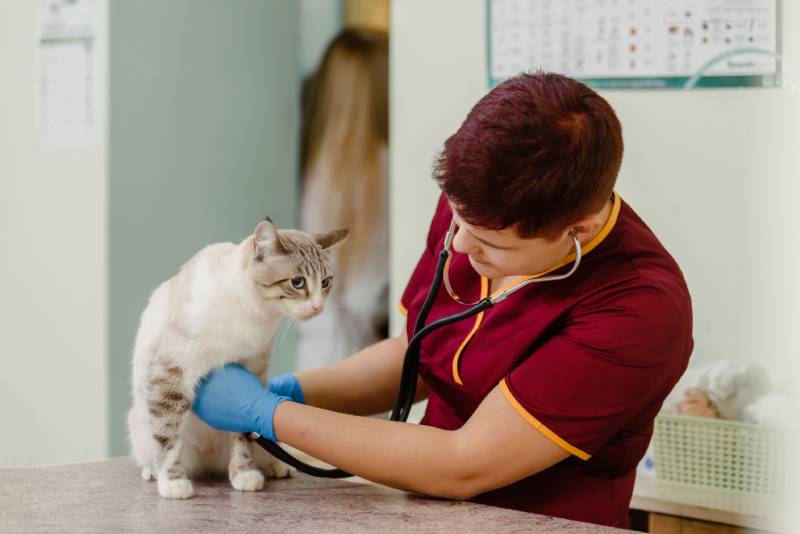
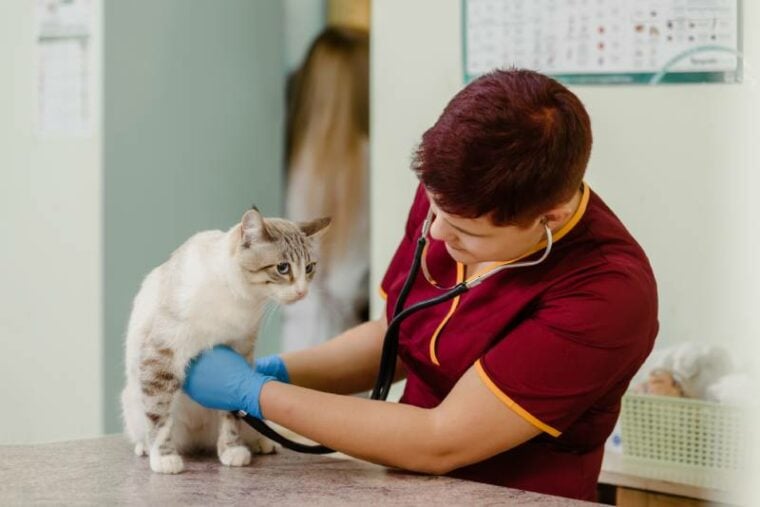

The information is current and up-to-date in accordance with the latest veterinarian research.
Osteomyelitis is a serious disease seen in cats. It can be life-threatening and it causes excruciating pain for our feline companions. If left untreated, it can result in the amputation of affected limbs. The word “osteomyelitis” means inflammation of bone tissue and it can occur anywhere in the body where there are bones present.
The inflammation may occur with or without infection present. If there is no infection, this is classed as sterile osteomyelitis. In cats, it is more commonly seen with an infection. Infections of the bone occur when bacteria or fungal infections become established in the bone or bone marrow. An event such as a fracture or surgery can allow for infectious organisms to directly enter the bone. Alternatively, an infection can spread from another part of the body via the blood.
Signs of osteomyelitis can be very generalized. Contact your vet immediately to arrange an appointment if you suspect your cat is ill—the quicker the problem is diagnosed, the better the prognosis for your cat.

What Is Osteomyelitis in Cats?
Osteomyelitis is an inflammatory disease affecting bones. Any bone can be affected by osteomyelitis, however, the long bones such as the humerus, the tibia, and the femur are more commonly involved.
There are different types of osteomyelitis. These include:
- Bacterial infection: This is by far the most common type of osteomyelitis in cats 1. The bacteria can be brought to the bone via the bloodstream from an infection elsewhere in the body. Alternatively, it can gain direct entry via a surgical wound, or an injury such as a fracture or a bite. Bacterial infections can be acute or chronic. With acute infections, cats tend to present unwell with clinical signs such as fever, lethargy, and pain. Chronic infections may present with a seemingly well cat with a mild limp, but no other abnormalities reported by the owner.
- Fungal infection: Fungi can establish an infection in cats in many different ways. They are usually picked up via a skin wound or inhaled into the lungs. Once inside the body they move into the blood and travel around. Different fungi are prevalent in different areas so be aware of what your cat may be exposed to where you live.
- Sterile Osteomyelitis: This is inflammation of the bone with no sign of the presence of infectious agents. This type is rarely seen in cats.
What Are the Signs of Osteomyelitis in Cats?
Clinical signs of osteomyelitis very much depend on the location of the disease.
Common clinical signs include:
- Lameness:Limping or lameness in the affected limb(s) is the more common symptom seen. The lameness is caused by pain and inflammation from the damage and destruction of the bone tissue.
- Swelling:Due to the inflammation, the affected area is likely to swell up.
- Pain:The area affected will be sore and painful to touch. Your cat may resent being held or stroked suddenly. They may start to pant, become restless, or start vocalizing.
- Fever:Depending on the cause of the osteomyelitis, cats may have a systemic fever. Fever is usually seen with infectious causes.
- Lethargy:This can be due to the systemic effects of an infection.
- Loss of appetite:As mentioned above, if your cat is feeling unwell, they may go off their food.
- Loss of function of limbs/restricted movement: If your cat has a well-established infection, their mobility may be compromised.
- Muscle Wastage:If the affected limb is not being used, the muscle mass will reduce.
- Pus/discharge:Your cat may have purulent discharge leaking from the affected area.
What Are the Causes of Osteomyelitis in Cats?
The most common causes in cats are listed below:
- Injury (fracture/trauma/bites)
- Surgery
- Dental disease
- Soft tissue infection
The most common cause of osteomyelitis in cats is a bone infection caused by bacteria or fungi. This can be by direct access through an injury such as a fracture or surgery or sometimes a severe cat bite. The bacteria or fungi can also enter by a different route and travel to the bone via the blood, such as inhalation or ingestion. Contamination of a wound can also lead to infection of the blood and widespread disease in the body.
Kittens and immunosuppressed cats are more likely to become infected remotely via the bloodstream. Healthy adult cats usually encounter infections through an injury. A common route of infection is the mouth. Cats frequently experience dental diseases. Dental abscesses that involve bone are classed as osteomyelitis. Common dental issues include plaque and tartar buildup, gingivitis, and tooth root abscesses. All of these can lead to osteomyelitis in the jaw bones of the cat.
Fungal infections are usually only seen in specific areas in America. Different types of fungi are seen in each location. Your vet will be able to advise you if there are any found in your area. Fungi are usually inhaled by the cat and gain access to the bone via the bloodstream and lymphatic system.
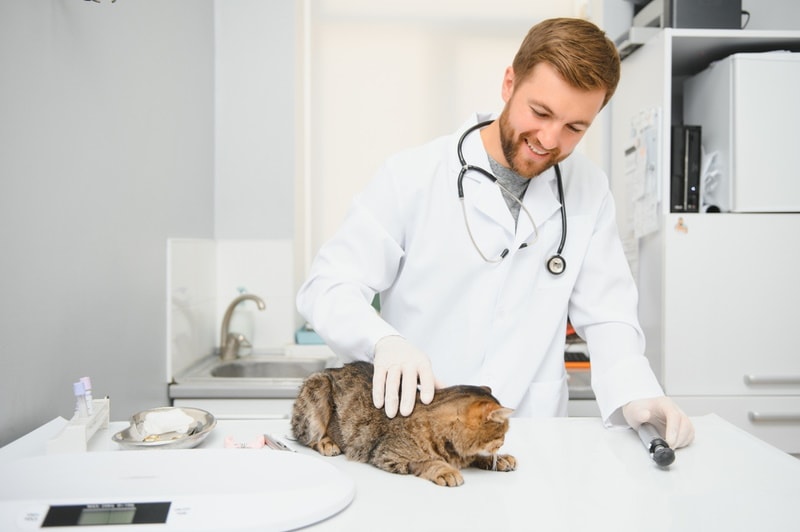

Diagnosis of Osteomyelitis in Cats
Your vet will obtain a full clinical history and carry out a physical exam on your cat. They will discuss any clinical findings in detail with you. It is important to mention any recent injuries or wounds, or equally any chronic issues such as a mild limp.
Your vet will carry out routine blood work and urinalysis. If they suspect osteomyelitis, they will need to carry out X-rays or other imaging to look for soft tissue and bone changes. If the infection has only recently been established, there may not be any dramatic bone changes, there may however be mild soft tissue swelling.
Changes in the bone include the destruction of bone and new bone formation. If there is any fluid or pus released, samples will be taken for analysis. Your vet may also take a bone marrow aspiration or a bone biopsy. These samples can be sent off to a lab for analysis to identify the cause of the bone disease.
Advanced imaging may be required such as CT and MRI scans. Fungal antibody levels can also be assessed if your vet is suspicious of a fungal infection.

How Do I Care for a Cat with Osteomyelitis?
Treatment for osteomyelitis depends on the underlying cause. If severe bone destruction has occurred resulting in dead bone or bone debris, surgery is required for removal of the pieces. If there are surgical implants that are causing issues they will need to be removed too as they will act as a nidus for infection. In these circumstances, no amount of antibiotics will resolve the infection, surgery and removal is the only choice.
Surgery to amputate affected limbs may also be required. An unfortunate complication of osteomyelitis is pathological fractures. This happens when the bone has been weakened so much it breaks under pressure it would normally be able to withstand. The bone cannot be repaired in the usual way as it is diseased—implants will not be able to be attached properly. Often amputation is the only feasible option.
Bacterial osteomyelitis needs to be treated with culture-specific antibiotics. This simply means a culture and sensitivity test needs to be carried out prior to prescribing a course of antibiotics to ensure that the bacteria will be eliminated by the chosen antibiotics. Samples can be obtained via bone aspiration or swabs of the affected site. The course of antibiotics required is lengthy. For acute osteomyelitis infections, usually, 4–6 weeks are required. For chronic infections, much longer courses are needed to eliminate the infection.
Fungal Osteomyelitis requires antifungal medication. Your vet may also prescribe pain relief and anti-inflammatory medication to make your cat feel more comfortable.
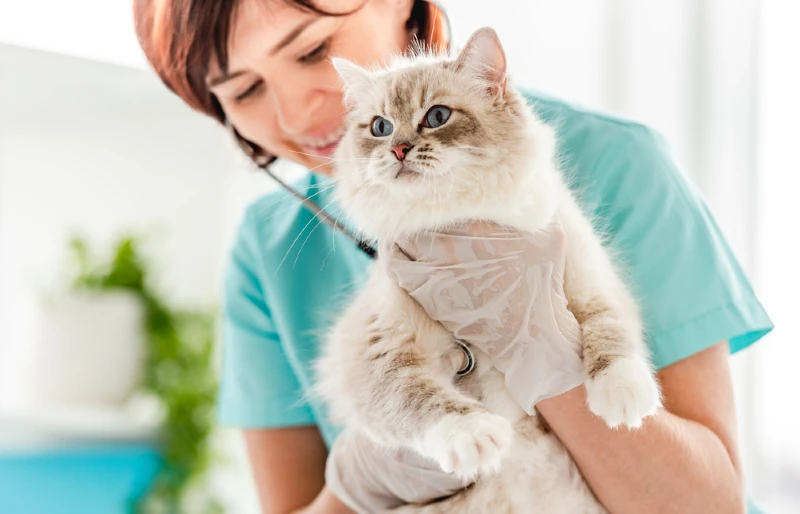

Frequently Asked Questions
Can osteomyelitis be cured in cats?
Depending on the underlying cause of the disease, treatment can be curative. Bacterial infections will require culture-led antibiotics, fungal infections require antifungal medication, and surgical intervention is required for the removal of implants or dead bone. If a limb has been severely affected, amputation can be carried out. Usually, medication or surgery is curative, as long as the owner is compliant.
Is osteomyelitis life-threatening?
Unfortunately, osteomyelitis can be life-threatening. Complications of the disease can be severe and have a hugely detrimental effect on the cat’s life. Aggressive forms can result in the destruction of bone, loss of function of limbs, septicemia, and death.
Can Osteomyelitis be prevented?
There is no direct method for the prevention of osteomyelitis, however, certain measures can be taken to reduce the risk. Keep any wounds clean and seek help from your vet if your cat has a bite or a scratch. Some owners prefer to keep their cats indoors completely to eliminate encounters with other cats and reduce the risk of injuries. Keeping up to date with routine dental appointments and maintaining good dental hygiene is important for your cat.
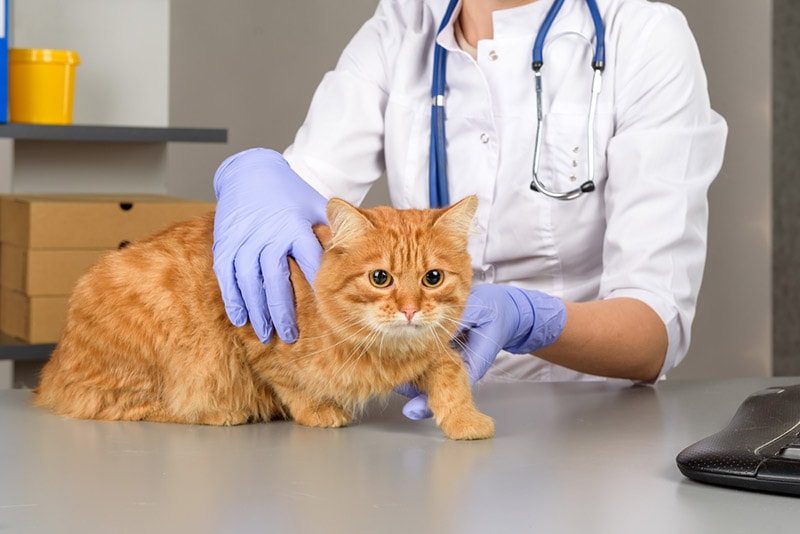

Conclusion
Osteomyelitis is a serious and debilitating disease seen in cats. Prompt diagnosis and initiation of treatment are paramount for a good prognosis. Courses of treatment are often lengthy and will require monitoring and regular checkups. Cats can be susceptible to repeat episodes depending on the underlying cause. It is important that owners are vigilant and bring cats in for an examination if they see any of the clinical signs associated with osteomyelitis.
Featured Image Credit: Denys Kurbatov, Shutterstock
Tags
What do you think?
Related Articles

New Puppy Checklist: Gear You’ll Need for Your New Dog
Getting a new puppy is really exciting, but before you welcome them home, it’s important to prepare your space for them. Since puppies need a

How Big Do Mini Poodles Get? Vet Reviewed Average Weight & Growth Chart – Dogster
The information is current and up-to-date in accordance with the latest veterinarian research. Learn more » When you buy a Miniature Poodle, you might not

Can Police Dogs Smell Nicotine? Vet Verified Facts & Info – Dogster
The information is current and up-to-date in accordance with the latest veterinarian research. Learn more » While cigarette sales have been declining steadily for decades,

How Old Is 5 in Dog Years? Vet-Approved Guide to Each Size of Dog – Dogster
The information is current and up-to-date in accordance with the latest veterinarian research. Learn more » A common method for calculating a dog’s age is

